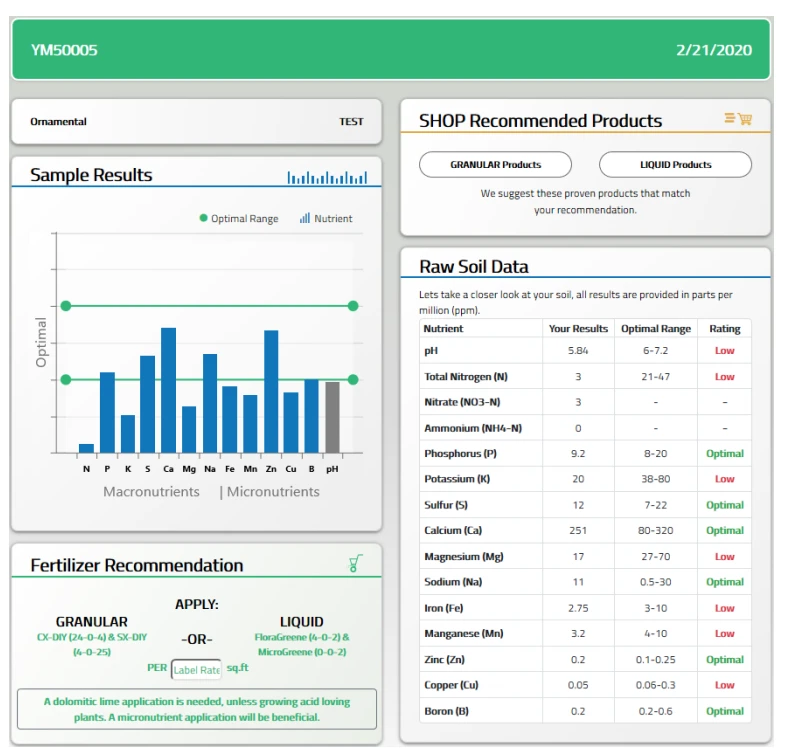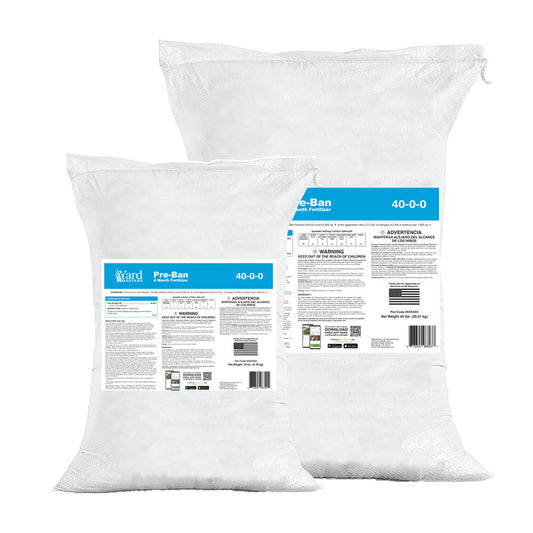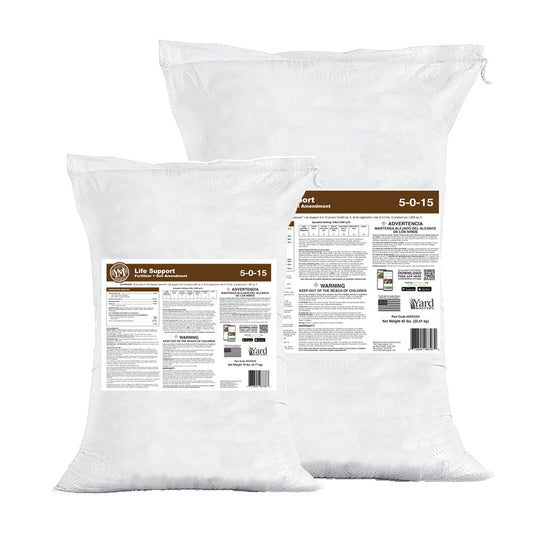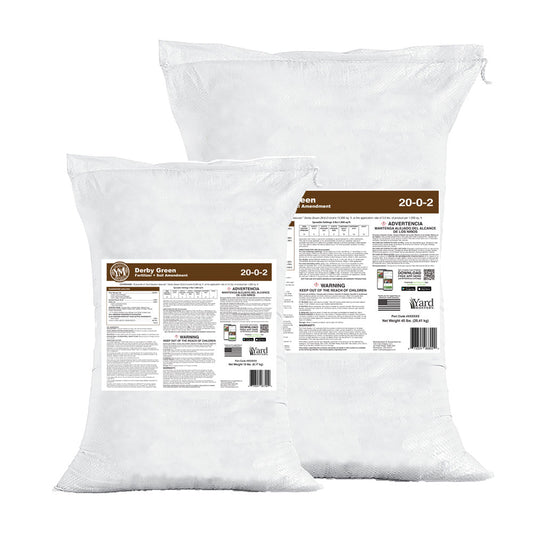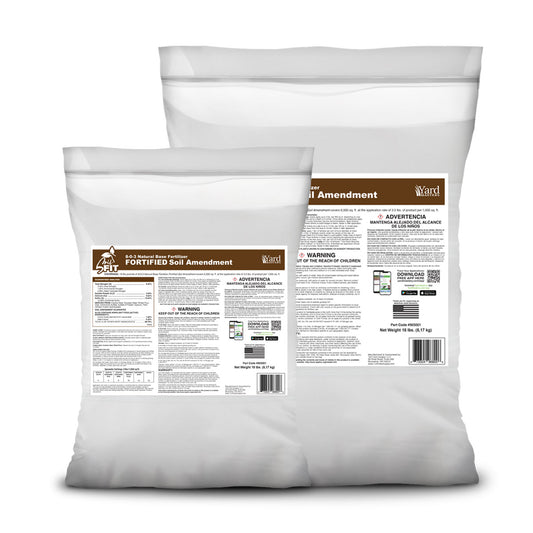Hey there Lawn Care Nut! I hope you are having a great week.
It’s hard to believe it’s the end of February already. Much of the country is well awake into their lawn care season. Friends from Southern California, over to Texas and down into Florida are enjoying the mow even as I type this email.
As we move north into the Carolinas, Tennessee, Kentucky and over to Oklahoma, the time is near. That strip across the middle of the country there - that is the transition zone and will be the focus of today’s Q/A.
When To Throw Down
Every year the spring wave up that sweeps the country is a little different. Sometimes there is no rain, this year, there is too much rain.
Sometimes the outside air temps stay colder than expected, this year, warm spells are frequent.
It’s the ebb and flow of spring and as I said in last week’s email, “The Weather Always Wins”.
That said, here are some questions I’m seeing this week in our group.
These questions are transition zone questions but those of you up further north can learn too because you will be facing similar conditions in about 3-4 weeks.

Note: Cool-season grass here. (probably turf-type tall fescue)
First: No seeding in spring if you plan to use prodiamine pre-emergent. Not before and not after.
Pre-emergent will stop your grass seed from growing. I don’t recommend spring seeding, here is a video (time stamped) explaining why:
Second: Tenacity is not the best in cooler temps - better to use something with 2,4D (active ingredient) in the ester formulation.
This Speed Zone product here is cheap and works VERY well in cool-season turf when you have early spring weeds invading.
In the transition zone, weeds will always grow in winter - Henbit, bittercress, chickweed - these are fall germinating annuals that slowly mature over winter. This is why it’s important to apply pre-emergent in the fall to stop them.
My advice to Chris is to NOT seed this fall and apply pre-emergent instead. This way you can cut back on those weeds in the 2021 spring season.
Third: Milo - Milorganite and I are going to address that one below because MILO PRICES ARE GOING UP!! (keep reading below for that)
Soil Temps Running Wild!
Fluctuations happen every year and that is why we use historical soil temps to give us a framework from which to work. Think of these like guard rails to the strategy even if the current weather is abnormal.
Let’s run a scenario for Johnson City, TN

This screenshot (GreeneCast Tool) is giving me the current and 5-day averages and I’d say based on this, that we are just a little early but definitely approaching the window.
Remember, for all grass types - you want your first application of pre-emergent down as soil temps are crossing 50F and approaching that 55F milestone.
Being a couple of weeks early is ok so let’s get some more data - historical:

So as I type this, it’s Feb 27 and going back and looking at the historical averages, it looks like Johnson City typically crosses the 50F mark around March 10,11,12 - sometime in there.
What this tells me is that anytime between now and then, Chris is good to go - in fact, I’d say that right now is the very beginning of the opening of the window.
If you live in Johnson City or anywhere near there - order now and be throwing down early next week!
Is It Really That Simple?
Yes, it is. The key here is that there is no perfect answer, but we can use data to get things dialed in as close as possible. As I often say, we are at the mercy of the weather, and the weather always wins.
Our job is to control the controllable, do what we can within the budget and time we have allotted, and from there, hope for the best.
Like any relationship, hard times will come, and it’s what you do in those hard times that make the good times better. Know when to throw down, know when to hold back… learn your land, be a responsible turf farmer and above all, enjoy the mow.
Soil Testing
I have a new soil test available if you are interested. It works similar to Soil Savvy did in that it gives you the currently available nutrients in your soil and pH.

No complicated math involved to determine what to throw down - instead, a simple snapshot of your soil as it stands in real-time.

This soil test will be further integrated directly into my strategies going forward (I’ll do vids about it coming up) but more than that, this test will provide recommendations of actual products available in The Lawn Care Nut (and Yard Mastery) stores. (Liquid and Granular)
Every other soil test you can get just comes back with generic recommendations of products you can’t always find.
Like I mentioned, much more to come but for now, if you want to get a soil test for the season, pick one or two up here.
Milorganite Pricing?
As you guys know, I’ve been a fan of MILO for years, and I still am.
It works great and is (was) readily available in every state in the country.
However, in recent years, it’s been sold out all over the place - and I blame you folks!!! Ha ha!
So when a product hits this point, retailers want to make more money on the demand, and prices go up. And that is the first point I want to make:
The folks at Milorganite (MMSD) have NOT raised the prices on MILO. The prices going up is 100% a decision of the retailer who is stocking it.
Can’t say I blame them since we do live in a capitalist society, but instead of getting upset about it, let’s do the math and use the data to tell us what we need to know:
Milorganite comes in a 32 lb bag and it seems the consensus is the price is now up to $18 around the country - whereas in 2019 it was $13 and before that, $10.
So let’s use the $18 price point and see what we get.

Remember, in the case of MILO, nitrogen drives the bus.
It’s just a general-purpose lawn fertilizer with nitrogen, phosphorous, calcium, and iron.
We like all that stuff but for sure, it’s N content we care most about - remember, it’s a “general purpose” fertilizer available at local stores and it’s also organic so it's naturally slow release and will not burn your lawn even if you over-apply on accident.
Analysis: 6-4-0
This means 6% of what’s in the bag is Nitrogen.
Weight: 32 lbs
Cost: $18
If you want to get 1/2 lb of N per 1,000 sq ft from this fert, you need roughly 10 lbs/1,000 (pounds on the ground).
10 x .06 = .6 lbs/N
That means that the 32 lb bag will cover 3,200 sq ft.
If you have a 5,000 sq ft lawn, then an application of MILO will cost you $28.13.
If you want to go bigger and get 3/4 lb of N per 1000 sq ft from this fert, you need roughly 12 lbs/1,000 sq ft (pounds on the ground).
12 x .06 = .72 lbs/N
That means the 32 lb bag will cover 2,600 sq ft.
If you have a 5,000 sq ft lawn, then an application of MILO will cost you $33.75.
Still pretty cheap right?
An application from a pro company like TruGreen will be much higher than this and they are not using slow-release organics anyway.
I just wanted to work some math there for you so you could see it for yourself.
Milorganite is my only “brand sponsor” and I want to make that clear too. I write blog posts for them and also do a meetup one time per year with them. I don’t make any money on MILO sales.
Milorganite Alternatives - Know The Math
Now, some folks are looking for alternatives because they don’t want all the phos that is also in MILO (it’s 4% phos - the second number in the analysis).
If that’s the case, then it isn’t about price anymore, it’s about getting some other benefits and that is why we have an entire line of granular products that not only have N-P-K choices and micros, but also contain bio-char and root promoting peptides.
If you have a soil test that shows you are high in Phos and in need of potash, then a good alternative to Milo in this regard is 8-1-8 XGN DIY (formerly called “X-GREEN”)

This product is 8% N and also has 8% potash (the 1% phos is negligible).
The reason this is significant is that there are VERY few products on the market with this amount of potash riding along with the N.
And on top of that, I don’t know of any other products that also contain bio-char and peptides to promote roots.
XGN DIY
Analysis: 8-1-8
Weight: 45 lbs
Cost shipped: $57.99
If you want to get 1/2 lb of N per 1000 sq ft from this fert, you need roughly 7 lbs/1000 (pounds on the ground).
7 x .08 = .56 lbs/N
That means that the 45 lb bag will cover 6,400 sq ft.
If you have a 5,000 sq ft lawn, then an application of XGN DIY will cost you $45.30.
Definitely more expensive than MILO but remember, with this product, you are not only getting the N - and also you are getting that potassium which is great for helping grass plants in times of stress - such as when they are transitioning from winter into spring.
XGN DIY is also slow-release, greens grade (small prills) and won’t burn so you are all good there.
What if you want to get more N in the application?
One more alternative:
If you want to get more N from your fert, then instead of putting down more XGN DIY, you can upgrade to CX DIY (formerly CarbonX).
This also has the bio-char base material, peptides, and some potash and micros but packs in a lot of N.

CX DIY
Analysis: 24-0-4
Weight: 45 lbs
Cost shipped: $59.99
If you want to get 3/4 lb of N per 1,000 sq ft from this fert, you need roughly 3 lbs/1,000 (pounds on the ground)
3 x .24 = .72 lbs/N
That means that the 45 lbs bag will cover 15,000 sq ft.
If you have a 5,000 sq ft lawn, then an application of CX DIY at this rate will cost you only $20.
By far, this is the cheapest of all the products when you look at it this way.
I know this can get confusing for folks so I will be doing some videos coming up explaining it further.
My goal with all of this is to help you to be more educated so you can make the best decision for your lawn going forward.
There are lots of choices available these days and knowing the data can help you navigate.
One last thing to mention: when you support us by utilizing products available from The Lawn Care Nut store and Yard Mastery - you are supporting small business startups in a space that has been previously dominated by billion-dollar conglomerates run by old-school thinking boomers who never cared about DIY until we came along. Just sayin’ :)
Thanks for reading all the way to the end here, hope you have a great weekend!
I’ll see you in the lawn!
AL



